I thought it would be fun to celebrate the ending of the Tudor’s in class to put together a post of the actually ‘endings’ of some of the Tudor’s themselves.
Like I mentioned in class on Tuesday, the case of Queen Elizabeth I’s tomb effigy is truly a curious one. As it turns out, in more ways than the one I brought up. This first picture is a shot of the marble tomb itself in Westminster Abbey (it doesn’t show the large columned canopy that covers it).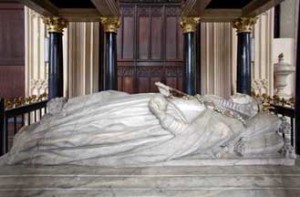 As you can see, the effigy isn’t very flattering.
As you can see, the effigy isn’t very flattering.
This next picture shows Elizabeth’s hands, which are not as dainty as they were depicted in the portraits we saw in class. Her fingers are still a little long, but not really when you consider the overall size of the effigy (it’s pretty big).
Here we can see her hands again, but also a really good shot of her face. The effort to keep Elizabeth looking youthful clearly didn’t carry over into death. Like in the later portraits, we see the lower neckline of Elizabeth’s dress. Also, the crown and scepter are modern recreations, the originals having been stolen sometime in the late-seventeenth or early eighteenth century.
This last picture is of the entire structure of Elizabeth’s tomb, a rather impressive and imposing one. While there seemed to be no love lost between Elizabeth and her sister Queen Mary, the two are buried together, though there is no representation of Mary beyond a plaque at the base of the structure.
While I postulated that perhaps James I didn’t care much for his mother considering that he was abandoned by her at a young age, the tomb that he built for her in Westminster Abbey suggests that there may have been some affection after all.
Did I mention that it is across the aisle from Elizabeth’s tomb? And that her tomb is nearly as elaborate as Elizabeth’s?
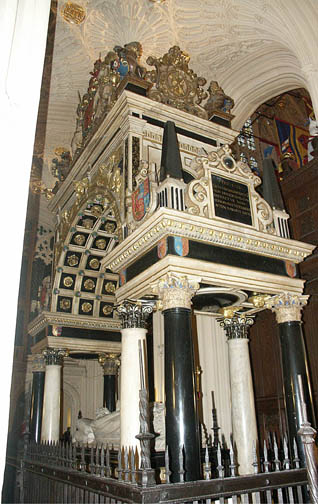 All of these tombs are located in the Henry VII Lady Chapel in Westminster Abbey. Here is a picture of the tomb of the original Tudor and his queen, Elizabeth of York. Also buried near Henry’s tomb is Edward VI, son of Henry VIII. The actual location of his tomb wasn’t discovered until the nineteenth century. A plaque now marks the spot.
All of these tombs are located in the Henry VII Lady Chapel in Westminster Abbey. Here is a picture of the tomb of the original Tudor and his queen, Elizabeth of York. Also buried near Henry’s tomb is Edward VI, son of Henry VIII. The actual location of his tomb wasn’t discovered until the nineteenth century. A plaque now marks the spot.
Here is an image of the foot of the sarcophagus, showing detailing of the English Coat of Arms. We also get a sense of the profound piety of the Henry and perhaps the divine sanctity he associated with his claim to the throne and his reign.
Lastly, we have the tomb of Henry VIII. You would think that Henry would have the grandest of all the tombs of the Tudors…
Henry had planned an elaborate tomb, one that may have reviled his father’s, though it was never constructed. Instead, he was buried in a vault beneath St. George’s Chapel at Windsor Castle with his third wife, Jane Seymour. The simple marker above was not placed until the reign of William IV, the predecessor of Queen Victoria. As you can see, the vault also houses the remains of the deposed, tried, and executed King Charles I.



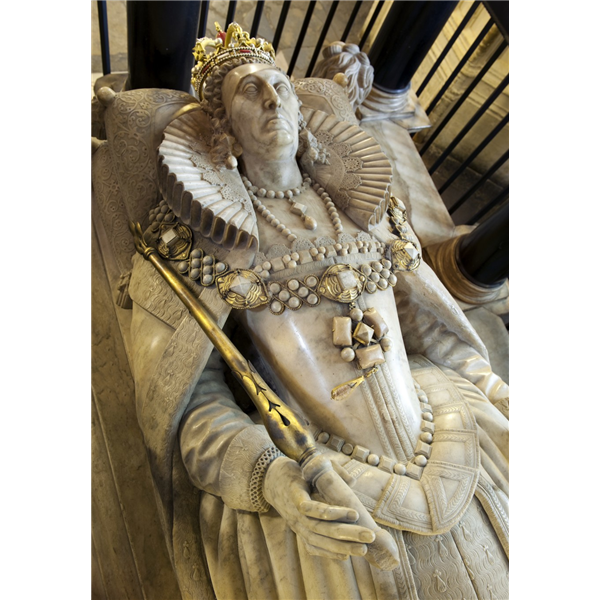
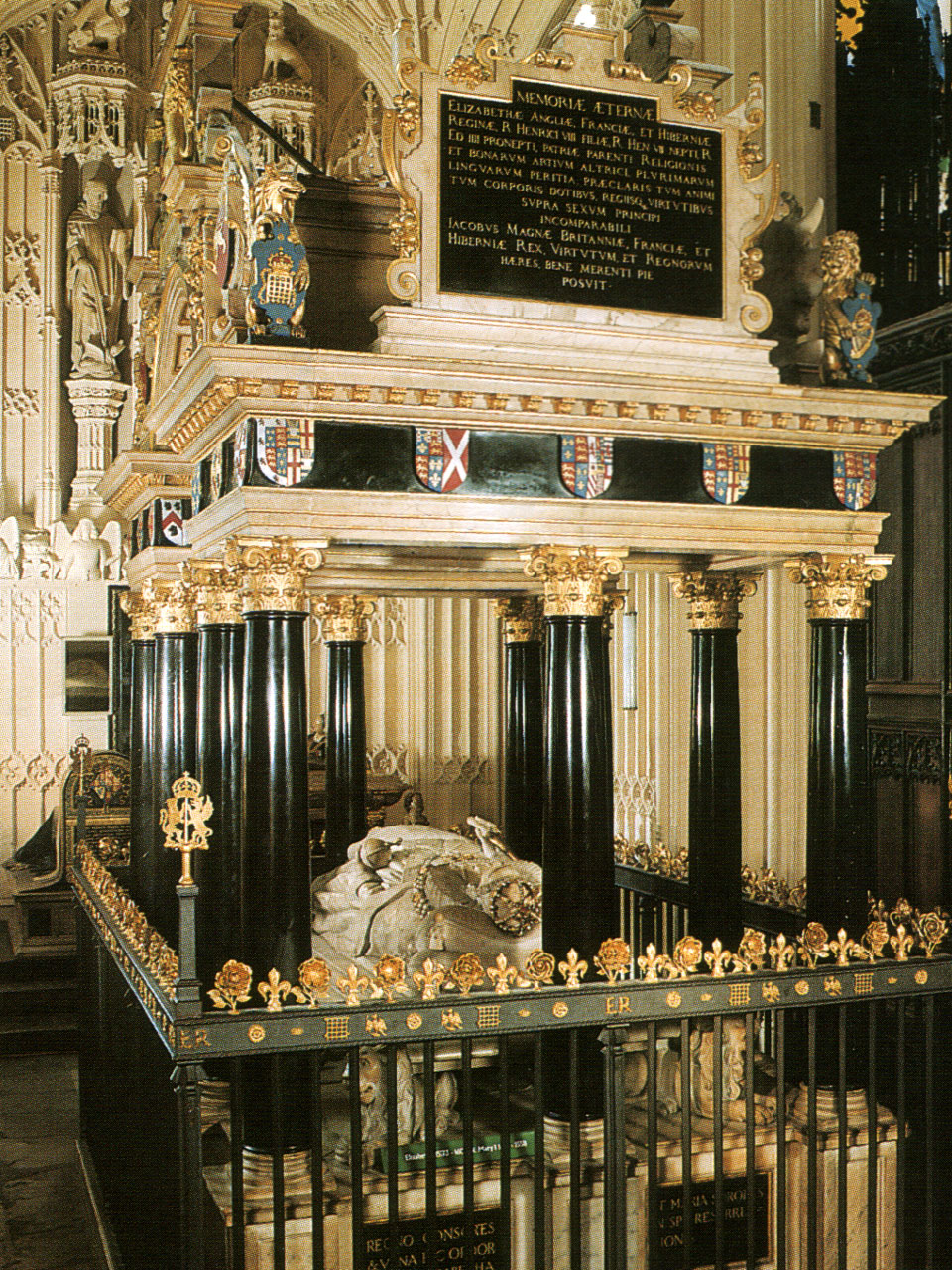
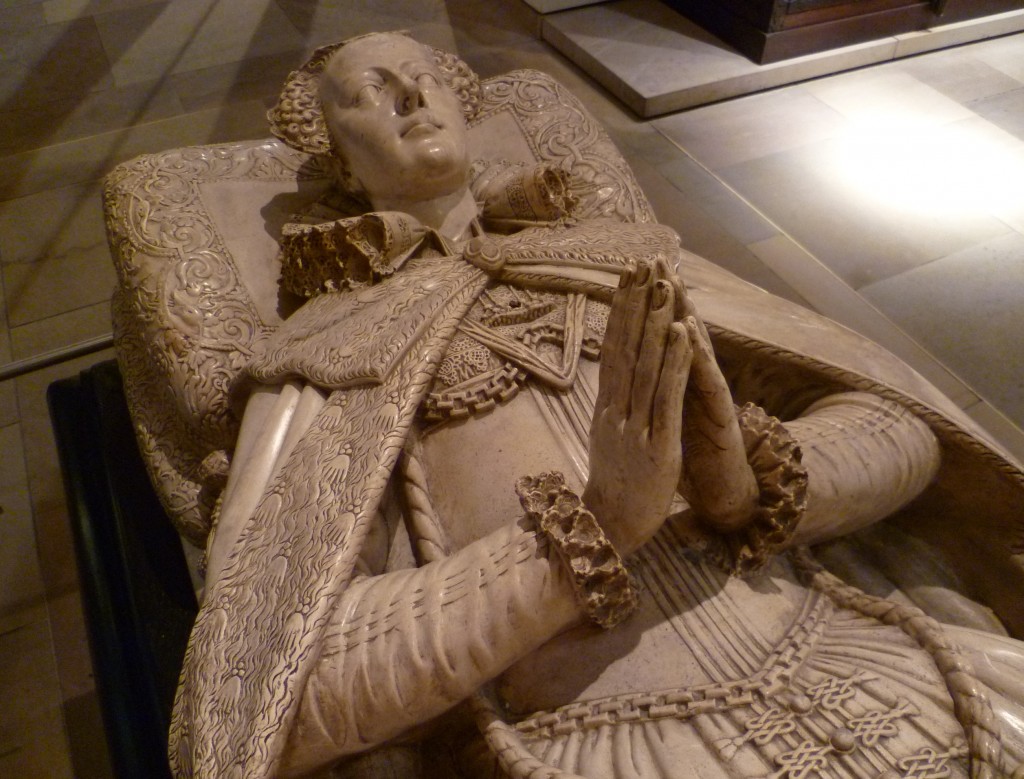
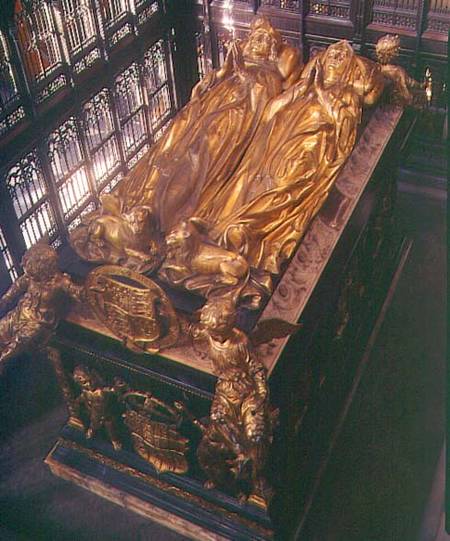
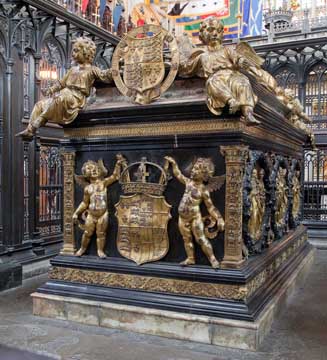
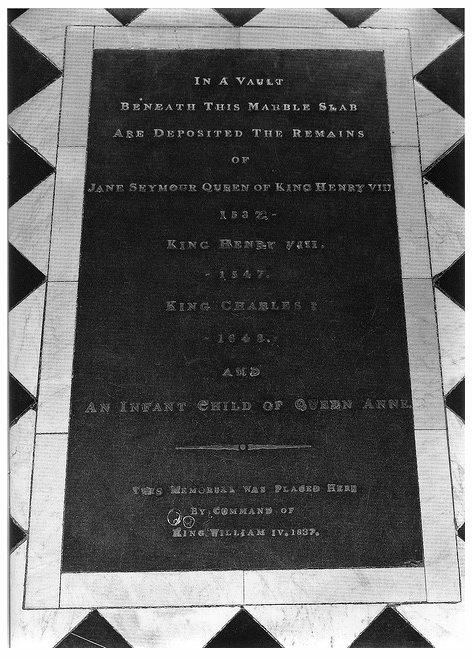
Chris,
I´m super impressed by the grandeur of these tombs (and amused at Elizabeth´s effigy!). I think the variety of designs and the fact they´re not all together in one place speaks about the political turmoil that has been English succession. I have been to the Escorial Palace in Spain where all the Habsburg monarchs are buried (along with their wives and children) and there is something to be said about the continuity of power when you visit that place. They´re all in a crypt that is as huge as one side of the palace (which is huge!) and their tombs are all very impressive, with effigies and elaborated ornaments. While the sight can be a little creepy, still you walk along those long corridors filled with tombs thinking those few men and women ruled an entire empire for 300 years. And you find a new sense of respect for them, even if so much blood an tears were spread in the making.
Chris,
Thanks for posting these photos of the tombs, this is so interesting! I think Elizabeth would be turning in her grave if she saw how elderly and frail she looks in her effigy. One would think, if she was so controlling of her public persona, she would have designed her effigy prior to her death. Or is that too morbid, even for this time period? On the other hand, Mary’s effigy is actually quite nice and portrays her in a nice way. Most surprising though, was Henry VIII’s effigy, or lack there of. I wonder if his effigy was never constructed because of negative feelings of the behalf of his children, or if it was because everyone was too busy dealing the turmoil his life and death caused to construct it. Very interesting!